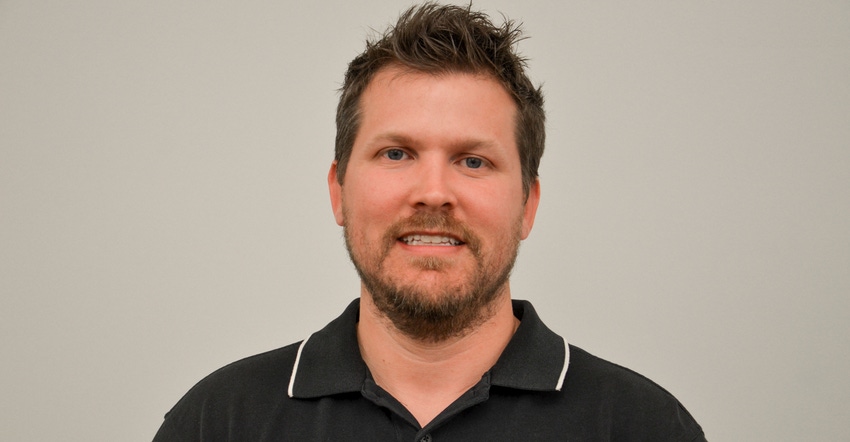
Travis Mead believes in soil conservation. More specifically, he believes a healthy soil is the key to better production. And he believes that if you compare soil health to human health, you can soon see the parallels that can lead to both improved lives and better soil.
Originally from southwest Michigan, Mead moved to Knox in Starke County, Ind., recently to become a district conservationist with the Natural Resources Conservation Service. He wanted the opportunity to work with growers and landowners and help them develop healthier soils and more sustainable farming systems.
Mead explains how he sets out to convince people that just as you’re more productive when you’re healthy, your soil will be most productive when it’s healthy. He explains his reasoning to Indiana Prairie Farmer in this exclusive interview.
You have noted that many people in Starke County still farm conventionally. Why isn’t there more no-till in the area?
Our part of Indiana is very diverse, and growers raise a diversity of crops. We have people who raise mint; others raise potatoes. There is a large amount of seed corn raised. These crops haven’t traditionally fit as well with no-till as commercial corn and soybeans.
Can you build soil health without no-till in the system?
Yes, but it’s a slower process. We have some people working with cover crops. However, many of them kill them in the spring and still till before planting.
When people ask you about how to improve soil health, what do you tell them?
There are five key ways that you can begin to improve soil health, starting with cover crops to get something growing more months of the year. The second is crop rotations. By rotating crops and including things besides just corn and soybeans, you can help the soil. You also need to include integrated pest and nutrient management to build a healthy soil. No-till is an important practice that can speed up building soil health. By not disturbing the soil, you allow soil livestock to flourish. Incorporating livestock in our fields is another key to improving soil health.
How do you try to convince people that improving soil health is important?
I use the analogy of human health. If you’re not healthy, you go to the doctor. The doctor is going to ask questions about what you eat and how much exercise you get. If you want to get healthier, he or she may help you develop a plan to eat better and exercise more.
If you want to increase the health of your soils, the same principles apply. You need to find ways to exercise the biology of the soil and build soil structure. Cover crops not only help build soil structure, but along with crop rotations, increase the diversity of biology in the soil. The more of the five key practices we talked about that you can use in your farm operation, the faster you can improve soil health.
Is there a one-size-fits-all answer to improving soil health?
No. Looking at people and human health, we all have different immune systems, and our bodies function differently. Every farm is going to be different because soils and conditions are different. It’s not a one-size-fits-all solution. There is no one solution that fixes everything. You need to find what works for you.
About the Author(s)
You May Also Like




